Disclosure: I work with ResearchHub and we are hosting an e-Journal Club/AMA this Sunday, 3/20, at 2p ET discussing Minicircle DNA as a vector for gene therapy in humans.
Specifically – we will be break-down the 2003 proof-of-concept paper “Minicircle DNA vectors devoid of bacterial DNA result in persistent and high-level transgene expression in vivo" figure by figure, and then open things up for a live-AMA with the presenters: Tristan Roberts, Dr. Steven Finckbeiner, and the people behind Minicircle LLC
If you would like to learn more about the event – here’s a link to our signup page: https://ama.researchhub.com/tristanroberts
To give a taste of what this event will be like - here is a written summary of the paper we will discuss:
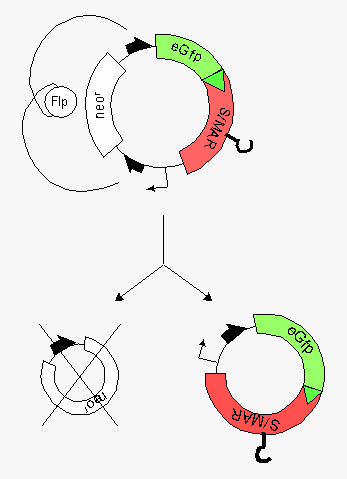
image credit: https://en.wikipedia.org/wiki/User:Juergen_Bode
Background:
A transgene is a gene that has been isolated from one organism and is subsequently introduced into another organism. Introducing novel transgenes into an organism is the conceptual basis of gene-therapy.
Historically, viral vectors have been used to facilitate the integration of novel transgenes into host organisms. Unfortunately, these vectors have inherent challenges that make them unsuitable for therapeutic applications in humans.
Viral vectors elicit an immune response that prevents any individual class of viral vector from being used more than once. Because there are a limited number of classes to choose from, this severely limits their clinical applications.
Therefore, researchers have begun to explore the potential of non-viral vectors for gene therapy. The most common of which are plasmids
Plasmids are small loops of circular DNA found in bacteria and archaea that are not physically associated with the organism’s chromosomal DNA. Plasmids provide evolutionary advantages by allowing bacterial species to “swap” phenotypic traits in a process called horizontal gene transfer.
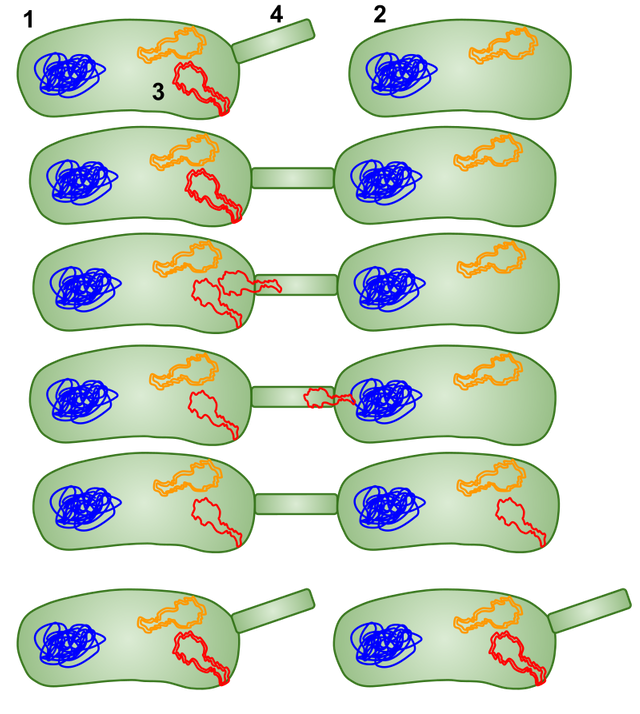
image credit: https://commons.wikimedia.org/w/index.php?title=User:KeeperGirl12&action=edit&redlink=1
For example, some bacterial plasmids encode proteins that give the host cell antibiotic resistance. Many species of bacteria can share plasmids through the process of conjugation. If a bacterium with an antibiotic-resistance plasmid is close to another bacterium without antibiotic-resistance, the first is able to transfer the plasmid to the second. The result is that after conjugation both cells can express the proteins required to become antibiotic-resistant.
The natural process of transgene expression via bacterial conjugation inspired researchers to explore plasmids as a potential vector for gene therapy in mammals.
While bacterial plasmids are able to integrate into mammalian host cells, they can only express transgenes for a short period of time. It turns out that mammalian cells contain natural defenses against this process. Mammalian cells can recognize bacterial DNA sequences and have the cellular machinery required to “silence” the foreign transgene expression.
Motivation:
The motivation behind the study was to test the following hypothesis:
If bacterial DNA sequences within a plasmid vector are the source of eventual transcriptional silencing in mammalian cells, then a vector devoid of bacterial DNA will result in persistent transgene expression.
The authors propose the concept of “minicircle DNA” – or a plasmid that contains no sequences of DNA from bacterial origins. They find that minicircles are able to produce high-level, persistent gene expression (>120d) in mouse models.
Results:
This paper demonstrates that minicircle vectors result in long-term expression of two human genes (alpha1-anti-trypsin and factor IX) when injected into mice.
Minicircle plasmids (MC) containing a copy of the human alpha1-anti-trypsin (hAAT) gene were injected into mice and resulted in persistent expression over the course of 120 days:
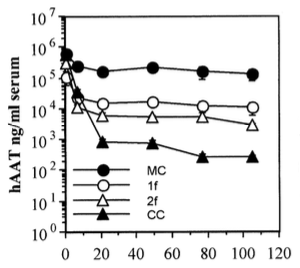
Chen et al., 2003
In addition, minicircle plasmids (MC) containing a copy of the human factor IX gene (hFIX) also showed persistent expression 120 days after being injected into mice:
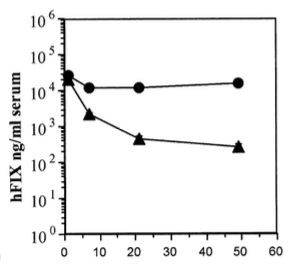
Chen et al., 2003
Finally, to confirm that this increased expression was not the result of an enhanced ability to transfect mammalian cells they observed that the amount of genetic material within cells were comparable between minicircles and control vectors containing bacterial DNA:
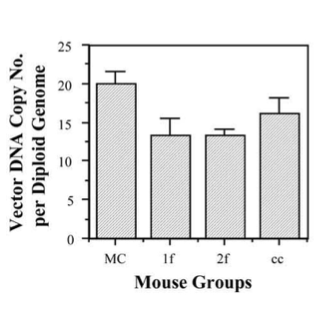
Chen et al., 2003
Significance:
This study provides evidence that minicircles are an effective vector for long-term transgene expression in mammals. Therefore minicircles hold great promise as a tool for gene therapy applications to treat human disease.
Thank you!
Thanks for reading this post. If you’re interested in learning more about minicircle DNA and their clinical applications – I hope you will join us for our live-streamed e-Journal Club on Sunday!